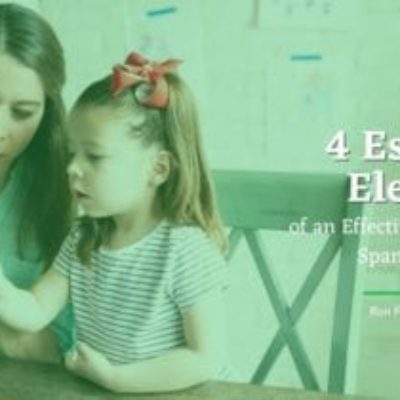
Can You Learn Spanish Without Studying Grammar? Yes! Here’s How
Hate worksheets? You can still become fluent with the right kind of practice.
If the thought of conjugation charts and grammar drills makes you want to close your laptop, you’re not alone. For many adults learning Spanish, the idea of going back to “school-style” language learning is what stops them from starting at all. But here’s the good news: you can absolutely become conversational in Spanish without turning your living room into a grammar lab.
Fluency isn’t built on perfect grammar; it’s built on consistent, real-world use of the language. And as an adult learner, you have an advantage: you already know how to communicate. You just need to learn to do it in Spanish, and you can do that by focusing on meaning and connection rather than memorization.
Let’s explore how.
Join 559 million people on the planet who speak Spanish!
Sign up for your free trial Spanish class today. ➡️

Why Grammar Isn’t the Starting Point
It’s not that grammar is useless, it’s that it’s often taught in ways that slow beginners down. Most adult learners aren’t aiming to write academic essays in Spanish. They want to order food, make small talk, travel, or connect with friends or family.
Focusing on communication first helps you build confidence and motivation. In fact, research backs this up. Studies show that learners who focused on communication and exposure showed greater long-term fluency than those who relied heavily on grammar instruction.
Grammar has its place, but it doesn’t need to be your entry point.
Here’s How to Learn Spanish—Without the Grammar Overload
1. Learn in “chunks,” not individual words
Instead of memorizing vocabulary lists or sentence structures, learn whole phrases that native speakers actually use. These chunks, called “collocations,” help you sound more natural and internalize grammar without thinking about it.
Examples:
- ¿Cómo estás? (How are you?)
- Me gusta mucho este lugar. (I really like this place.)
- ¿Puedes ayudarme, por favor? (Can you help me, please?)
When you use these regularly, your brain starts to pick up on the patterns behind them without needing to label every part of speech.
2. Focus on listening and repeating
Language acquisition happens when your brain hears meaningful input over and over. Listening to real Spanish—through podcasts, shows, or live conversation—trains your ears and builds your internal language map.
Try something like Coffee Break Spanish for slow, beginner-friendly listening practice. Repeat phrases out loud, even if you don’t understand every word. The goal is to get comfortable with rhythm, tone, and structure.
3. Practice speaking from day one
You don’t need to wait until you’re “ready” to speak. In fact, speaking early helps cement vocabulary and grammar more effectively than reading about it. Even simple sentences like “Tengo hambre” (I’m hungry) or “Quiero café” (I want coffee) are huge wins.
A great way to start is with a personal tutor who can guide you in natural conversation without overcorrecting. Homeschool Spanish Academy offers 1-on-1 lessons tailored to beginners who want to speak, not just study.
4. Use visuals and context
Instead of trying to translate everything, use images, gestures, and stories to build connections. Watch short Spanish videos with subtitles. Point to objects in your home and say their names out loud. Language sticks better when it’s connected to your environment and experiences.
5. Embrace mistakes, they’re part of the process
Children don’t learn language by studying grammar; they learn by trying, failing, and trying again. You’re allowed to make mistakes. In fact, that’s how your brain learns fastest. Don’t stop speaking because you aren’t perfect. Keep going, and fluency will follow.
So, When Should You Learn Grammar?
Once you’re comfortable with basic phrases and can hold simple conversations, grammar becomes a tool to refine your understanding, not the foundation. Think of it as a map you look at after you’ve started exploring, not before you take your first step.
If you’re curious or naturally analytical, light grammar explanations can be helpful. But the key is to learn them in context, not in isolation.
Final Thoughts: You Don’t Need to Feel “Back in School” to Learn Spanish
As an adult, you’re not learning Spanish for a grade, you’re learning it to communicate. To connect. To travel. To explore. You don’t need red pens and grammar drills to get there.
Instead, focus on using the language in real ways that matter to you. Speak early. Listen often. Learn phrases, not rules. And most of all, enjoy the process. You’re not “behind,” you’re right where you need to be.

Join one of the 40,000 classes that we teach each month and you can experience results like these

“It’s great being able to interact with native speaking people and having a conversation with them not just doing all the work on paper. It’s also an amazing opportunity to speak with native Spanish-speaking people without having to travel to a native Spanish-speaking country.”
– Melanie

“Getting to know wonderful teachers who care about me and my growth in language and education. Evelyn Gomez and Erick Cacao are two of the most extraordinary people I have ever met, and talking with them in Spanish at the beginning of classes is always so fulfilling and greatly contributes to my happiness, joy, and wellbeing.”
– Abby

“I love that my children have the opportunity to speak with a live person. They get to practice Spanish in a 1-1 setting while improve their speaking, writing and reading skills during their lessons. HSA is a great way to learn Spanish for all ages! My children are 6, 9 and 11. My oldest two (9 and 11) have been taking classes with HSA for almost 2 years now. They love seeing their teacher each week. They understand the importance of learning several languages. I’ve seen them grow and learn with HSA. I’m excited to see how they will improve the more classes they take. I highly recommend them. You can’t bet learning and speaking with a live teacher. I’ve tried other programs. It’s just not as motivating.”
– Karie Ann, Parent of 3
Want more Spanish Learning Strategies? Check these out!
- Can Middle Schoolers Really Learn Spanish Without Flashcards?
- Your Child Knows Spanish Words, Now What? How to Turn Vocabulary into Real Conversations
- From Snacks to Dinners: Spanish Vocabulary for Food That Teens Actually Talk About
- Why 2-on-1 Spanish Classes Work Better for Beginners (Especially Middle Schoolers)
- How to Build a Spanish Practice Routine That Sticks (And Doesn’t Spark Eye Rolls)
- Why Learning Spanish Feels Harder as an Adult, And What You Can Do About It
- 10 Ways Learning Spanish Can Improve Your Child’s Behavior
- 8 Places to Learn Spanish in Costa Rica





